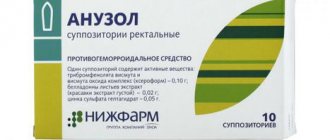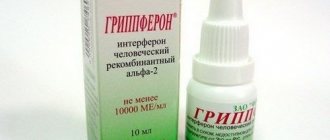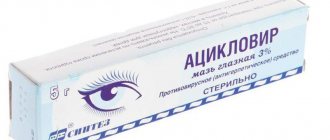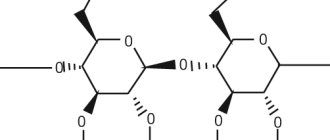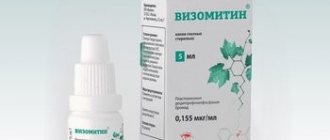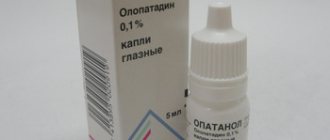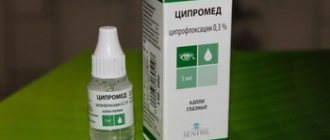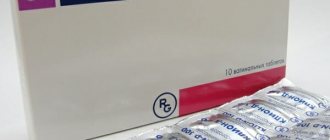The drug Actovegin is a medicine that doctors at the Yusupov Hospital prescribe as part of complex therapy for patients suffering from diseases of the nervous, endocrine and vascular systems. The following forms of Actovegin are available:
- 10% and 20% solution for infusion in 250 ml bottles;
- Solution for injection in ampoules of 2, 5 and 10 ml;
- Tablets, greenish-yellow, shiny, round, 200 ml.
Actovegin is the active ingredient of the drug. This is an extract of the blood of dairy calves purified from proteins. Actovegin belongs to the pharmacological group of drugs that activate tissue metabolism, improve trophism and stimulate the regeneration process. Manufacturer: Takeda Pharmaceuticals, LLC (Russia), PharmFirma SOTEX (Russia) and Takeda (Austria).
Doctors at the Yusupov Hospital individually select Actovegin doses, route of administration and duration of therapy after a comprehensive examination of the patient using modern instrumental and laboratory research methods. Severe cases of diseases that are indications for the use of Actovegin are discussed at a meeting of the Expert Council with the participation of professors and doctors of the highest category. Medical staff professionally perform intramuscular, intravenous injections and infusions.
The use of disposable syringes, systems for intravenous drips, strict adherence to the rules of asepsis and antisepsis helps to avoid infection of the patient during injections. The description of the drug Actovegin was created on the basis of official instructions. The composition of the drug Actovegin includes the main active ingredient and auxiliary ingredients.
Actovegin dropper release forms
Actovegin for intravenous injection is produced in the form of a solution in ampoules of 2, 5, 10 and 20 ml. One ampoule contains 80, 200 or 400 mg of the main active ingredient. The ampoules are placed in a plastic container, the secondary packaging is made of thick cardboard. It allows you to maintain the integrity of the bottles. The packaging contains information about the manufacturer, release date of the drug, expiration date and series. Detailed instructions for using the drug are contained inside the package. Actovegin solution in ampoules has a yellowish color with various shades. The difference in shades depends on the batch of the drug and does not affect the effectiveness of the drug.
Actovegin solution is administered intravenously, which is contained in 250 ml bottles. The bottles are placed in cardboard packaging. If necessary, the medical staff of the Yusupov Hospital dissolves the contents of the ampoules in 250 ml of 5% glucose or physiological sodium chloride solution and administers it intravenously.
Analogs
Actovegin is a drug that provides tissue regeneration; it has no full-fledged analogues in composition; drugs from the same pharmacological group are considered as its substitutes.
Cerebrolysin
The active ingredient in Cerebrolysin is obtained from animal products. The composition ensures restoration and normalizes the functioning of nerve cells. The product is produced only in the form of a solution intended for injection. The treatment regimen is selected individually; to achieve therapeutic effectiveness, a course lasting 4 weeks is required.
Cortexin
Cortexin is produced in the form of a powder intended for the preparation of a solution for intravenous administration. According to its pharmacological properties, the drug belongs to the group of nootropic compounds. The product restores the normal course of chains of biochemical processes in the human body. The advisability of use in pediatric practice, as well as during pregnancy and breastfeeding, is determined privately. The remedy is often recommended for use after head trauma and brain contusions.
Indications and contraindications for intravenous use of Actovegin
Doctors at the Yusupov Hospital prescribe Actovegin intravenously if there are the following indications:
- Diseases associated with dysfunction of venous, arterial vessels and capillaries;
- Ischemic stroke and consequences of traumatic brain injury;
- Trophic ulcers and bedsores;
- Chemical, thermal and radiation burns;
- Encephalopathies of various origins;
- Metabolic disorders;
- Vascular angiopathy.
Due to the lack of data from long-term studies, Actovegin is not recommended for use in children under three years of age. The drug is well tolerated by patients. It is not prescribed for individual hypersensitivity to the ingredients of the drug, for patients with kidney disease, liver disease, heart failure and anuria (cessation of urine flow into the bladder).
conclusions
At the moment, Actovegin has not undergone a single study according to the GHP rules (the international code of quality medical practice that guides scientists in conducting clinical trials). But at the same time, the company producing the drug does not set such a goal, since a strong evidence base is not required for the fish to enter the main market (CIS countries).
According to studies of medical records of patients with hypertension who were hospitalized, it was revealed that the percentage of money spent on treatment with Actovegin averaged 17% of the total amount. This is irrational spending on a drug without an evidence base for hypertension and concomitant conditions, and its inclusion in the prescription lists is impractical.
Dosage for intravenous injection
The instructions for using Actovegin intravenously inform that the drug can be administered by drip and jet route. Actovegin is administered intravenously if it is necessary to quickly achieve an effect. Before administering actovegin intravenously, the solution contained in the ampoule is dissolved in physiological sodium chloride solution or 5% glucose. When administered intravenously, the daily dose of the drug should not exceed 20 mg. Actovegin is administered intravenously slowly.
In order to prevent allergic reactions, the drug is titrated. At the beginning of therapy, 2 ml of Actovegin is administered intravenously, having previously dissolved it in saline, then 5 ml. Severe cases of diseases for which intravenous administration of Actovegin is indicated are discussed at a meeting of the Expert Council, in which professors and doctors of the highest category take part. Leading specialists collectively decide on intravenous administration of 20-50 ml of the drug.
In case of exacerbation of chronic diseases and moderate severity of the patient, doctors prescribe 5 ml of Actovegin intravenously for two weeks. For mild cases of the disease, intravenous administration of two milliliters of the drug is possible. The duration of treatment can vary from several days to a month.
Price
You can buy the product with a prescription in pharmacies or by placing an order on the online store website.
The cost of medicine depends on the regional location of the point of sale. 1,465 rubles for a package of tablets (50 pieces) .
The injection solution is offered in several versions:
- 10 ml (5 ampoules) – price 2103 RUR.;
- 5 ml (5 ampoules) – price 1060 rub..
You can find out how much the medicine costs in the dosage you are interested in on the information and reference website.
Instructions for intravenous use
Actovegin is administered intravenously at the Yusupov Hospital by specially trained personnel. Nurses are fluent in the technique of intravenous injections and have extensive experience in placing IVs. Manipulations are performed in compliance with the rules of asepsis and antiseptics. Before starting the manipulation, wash your hands thoroughly with soap and treat them with an antiseptic solution, and put on sterile disposable rubber gloves.
Actovegin is administered intravenously according to the algorithm:
- Prepare a syringe and an ampoule with Actovegin;
- Actovegin is dissolved and drawn into a disposable syringe;
- A tourniquet is applied to the lower third of the shoulder;
- The patient is asked to work with his fist;
- The vein puncture site is treated with an antiseptic solution;
- Slowly insert the needle into the vein against the blood flow;
- Pull up the syringe plunger and, when blood appears, make sure that the needle is in the lumen of the venous vessel;
- Remove the tourniquet;
- The drug is administered slowly;
- Remove the needle from the vein;
- The injection site is pressed with a cotton ball moistened with alcohol;
- The patient is asked to bend his arm at the elbow joint and hold it for 2-5 minutes.
To place an IV with Actovegin, nurses at the Yusupov Hospital use disposable systems and syringes. This prevents the patient from becoming infected. Mexidol and Actovegin are not administered in the same dropper.
Preparation of the solution
If Actovegin is injected into a vein by jet method, that is, directly from a syringe, then a solution from ampoules is used, which does not require preparation.
If the drug is to be administered by drip using a so-called “dropper,” then dilution of the ampoules will be required.
Instructions for diluting Actovegin intravenously:
- As a basic solution, use a 0.9% sodium chloride solution or a 5% glucose solution;
- Depending on the doctor’s prescription, add 10-20 ml of Actovegin to a bottle containing 200-500 ml of the main solution;
- Actovegin prepared in this way can be injected into a vein using a system (“dropper”).
Important! The product does not contain a preservative, so open ampoules and the prepared solution should be used immediately.
It is forbidden to mix Actovegin in one bottle with other medications other than those listed above.
Complications with intravenous administration
With intravenous jet or drip administration of Actovegin, side effects of the drug may develop:
- Allergic reactions;
- Dyspeptic phenomena;
- Complications from the nervous system.
The skin at the intravenous injection site may become red. In this case, use a warm compress. Sometimes after a drip, a patient’s vein becomes inflamed. Then the nurse, as prescribed by the doctor, applies a bandage with heparin or troxevasin. One of the complications of intravenous injections is air embolism, but the medical staff of the Yusupov Hospital masterfully performs the procedures and does not allow this terrible complication. In order to undergo an examination, to determine the presence of indications and the absence of contraindications for the use of Actovegin, please call. At the Yusupov Hospital, you can undergo a course of treatment that includes intravenous injections or infusions.
Patient reviews
Ilya, 34 years old:
After the accident, he spent a long time recovering in the hospital, where his head injury was treated with Actovegin and other medications. His ward neighbors used the drug in the fight against multiple sclerosis and the consequences of an ischemic stroke. No one had any side effects. I can confidently recommend a miracle drug that activates the transport of nutrients to the brain, eliminating signs of oxygen starvation.
Tamara Mitrofanovna, 57 years old:
After the stroke, she underwent therapy and then rehabilitation. Among the stimulant drugs was Actovegin, which the attending physician highly praised. After a week of injections, my well-being noticeably improved, dizziness disappeared, and coordination of movements stabilized. I recommend the medicine to those who are about to undergo treatment.
Undesirable effects
Actovegin injections are tolerated quite well by patients. Occasionally, redness and irritation may occur at the injection site.
If we talk about systemic adverse reactions on the body, the medicine can cause:
- allergic reactions, including angioedema;
- dizziness;
- swelling;
- difficulty breathing;
- chest pain;
- drop or rise in blood pressure;
- muscle and joint soreness.
Other undesirable effects may occur, a full list of which can be found in the package insert for Actovegin.
Therapeutic and pharmacological action of the drug
Regardless of the form of release, the drug has the same active ingredient - a deproteinized hemoderivative obtained from blood taken from healthy calves that received milk nutrition. This substance is obtained by special purification from large protein molecules - this process is called deproteinization. After it, a medium-sized set of active calf blood molecules is formed, which, in turn, have the ability to “start” metabolism in almost any organ or tissue of the human body. The deproteinization process makes it possible to create a ratio of molecules of such a size that it becomes possible to avoid negative allergic reactions to the drug. Pharmacist-chemists were able to ensure that each milliliter of solution contained an equal amount of deproteinized hemoderivative, which was synthesized from the blood serum of dairy calves. All fractions have an equal mass of the active component and are capable of providing a therapeutic effect with the same and stable intensity for a wide variety of diseases and conditions.
In some instructions (depending on the form of release and time of packaging), the active component of the drug is called “ConActovegin” (how to inject intramuscularly, described below) received in the treatment of neurological diseases. It successfully treats not only adults, but also children and adolescents. The drug is also used both as an independent remedy and as part of complex therapy in ophthalmology, cardiology, psychiatry, and dermatology.
